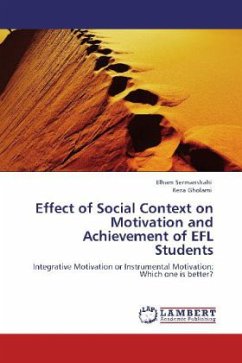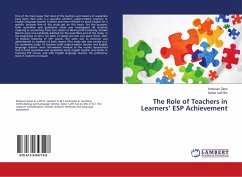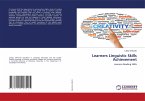Based on Spolsky's (1989)Model of second Language Learning, the social context plays an important role in developing the set of attitudes towards the target language, its speakers, and the language learning situation resulting in motivation development. The resultant motivation connects with other personal characteristics such as age, personality,capabilities and previous or background knowledge. Bernard Spolsky (1989)claims that all of these variables explain and are responsible for the use learners make out of available learning opportunities. Learning opportunities by themselves interplay between learner and the learning situation which will lead in final outcomes for the learner. In this book, the performance of high school students in Sari, Iran was scrutinized to find out which motivation type is dominant among learners in EFL countries as it is believed that motivation can affect the learners' outcome. Moreover, the students' achievement was investigated to find out whether the students achieve differently if they have instrumental or integrative motivation.








